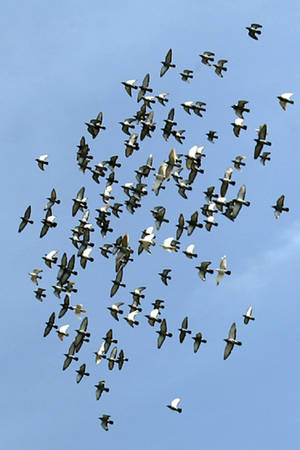What gets a Prof up in the morning?
Interview with
Nicola - Bird brain? Never more. There's something spectacular about songbirds - the sight of their wonderful wings, the sound of their melodious serenades, and the sheer beauty of their synchronous dancing displays. Perhaps the most intriguing question of all however, is what lies beneath that beady eye.
Until quite recently, it was assumed that birds were rather simple creatures with little ability to think. We now know that's not true. This mistake arose because the bird's brain has a very different structure to that of mammals, bereft as it is of the 6-layered structure of our cortex which has long been thought to provide the unique machinery for intelligence.
History has it that when the Anatomist Ludwig Edinger first proposed the  nomenclature for the various brain regions, he thought that most of the avian brain matter was derived from the striatum and basal ganglia. Indeed in mammals, these regions do have a striated appearance. But we now know that birds do have a cortex. Indeed, a large part of the bird's brain that lies above the basal ganglia is now recognised to be both functionally and developmentally akin to the mammalian cortex. The difference however, is that rather than producing a layered cortex as mammals do, the bird cortex has a nucleated structure. It's made of the same types of cells and has the same kind of connections, but with a different architectural design. It's a weight saving device for the birds, just like their hollow bones.
nomenclature for the various brain regions, he thought that most of the avian brain matter was derived from the striatum and basal ganglia. Indeed in mammals, these regions do have a striated appearance. But we now know that birds do have a cortex. Indeed, a large part of the bird's brain that lies above the basal ganglia is now recognised to be both functionally and developmentally akin to the mammalian cortex. The difference however, is that rather than producing a layered cortex as mammals do, the bird cortex has a nucleated structure. It's made of the same types of cells and has the same kind of connections, but with a different architectural design. It's a weight saving device for the birds, just like their hollow bones.
So, by analogy with cakes, the bird brain is more like a fruit cake whereas the mammalian brain is more like an Austrian Sacher-Torte.
So next time you hear the derogatory term 'bird brain', take it as a complement - brainy birds. For some songbirds are indeed quite brainy. Consider the crows. They have become known as feathered apes because their intellectual capabilities are actually on a par with chimpanzees.
Hannah - That was Professor Nicola Clayton, explaining her intrigue with bird brains.
- Previous Is there a brain basis to ADHD?
- Next Genes and Diet in ADHD?










Comments
Add a comment